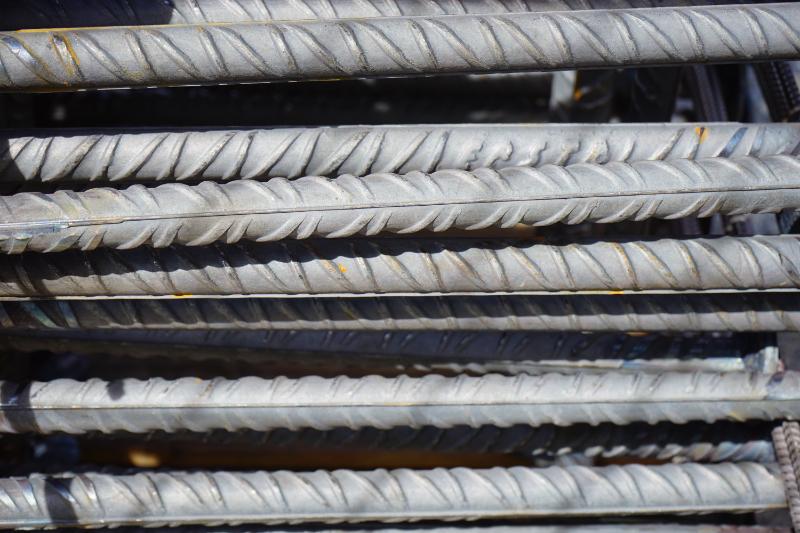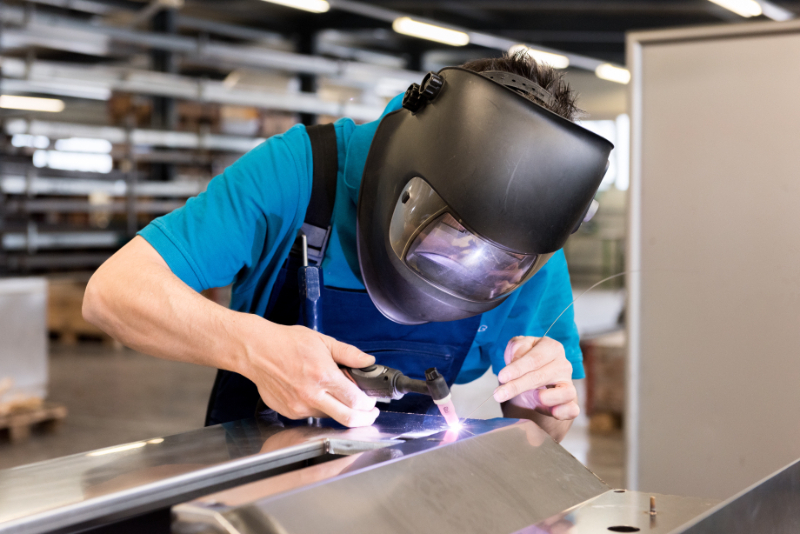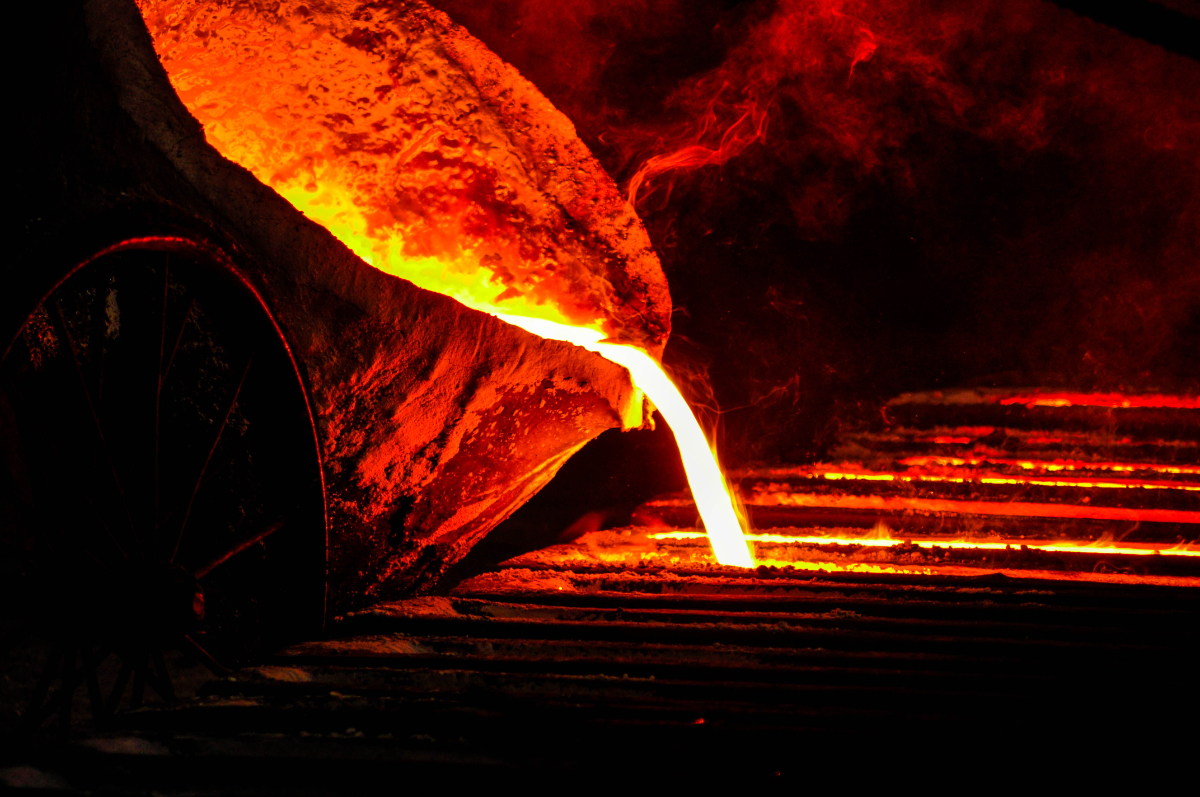The Most Common Materials Used in Metal Fabrication
What are the most common materials used in metal fabrication? This article explores the types of metal-fabrication and which materials are best suited for each method.
Iron is a widespread readily available chemical element due to its mass. It is most suitable for steel production, and it is substantial in quantity.
Steel is an alloy of carbon and iron, which generally includes various raw materials, including coal, limestone, iron ore, etc. It is one of the most prevalently used metal fabrication in multiple industries. There is a huge list of its uses, from weaponry end products to construction machinery.
Carbon Steel has a wide variety of hardness levels and can be fabricated to be so, and this depends mainly on the level of carbon used.
Stainless Steel is made of aluminium, nickel, carbon steel, chromium and various elements to form this intensely corrosion-resistant metal. It has a distinctive silver mirror coating that is polished.
It does not tarnish in the air; it is lustrous and brittle. They can create multiple cookware, appliances, cabinet fittings, surgical instruments, metal ceramics and numerous collectables.
Copper is a fantastic conductor of electricity. It is malleable, durable and pliable, alongside its immense corrosion resistance in your climate or atmosphere. It's ideal for industrial and marine environments.
Bronze is an ancient copper alloy used since 3500BC. It is more robust than copper, has a low melting point and is far heavier than steel. Bronze is used across many industries and manufacturers to produce turbines, cookware, armour, coins and weapons.
Brass is made from zinc and copper. It is primarily used for bolts, nuts, doorknobs, clock components, pipe fitting, furniture trim and many more. It makes an excellent material for acoustic properties and musical instruments.
Aluminium is incredibly durable, versatile and lightweight. It is a material that offers electrical conductivity and is very thermal. Its major downfall is that it does not perform particularly well at incredibly high temperatures, especially those above 400 degrees.
However, it works wonderfully at subzero temperatures, and it's excellent for refrigeration and aeronautics.
Magnesium is one of the lightest metal structures. Its density is incredibly low, and therefore, it is most suitable when strength isn't the most crucial factor, yet stiffness is necessary.
It is excellent for keeping the structural integrity of a building project. It is often used for complex geometries, automobile industry parts, aircraft housing, and rapidly rotating machinery.
Types of metal-fabrication
Structural fabrication
Sectional metals are created from steel, and they are made available in standardised shapes and sizes. They are primarily used for engineering tools and equipment for construction services and industries.
Various types of sectional metals with physical and chemical properties have predefined standards to comply with. The most prevalent types of sectional metals include:
I-beam is a long steel beam; it has a cross-section that looks much like the letter 'I.' Each flange has a slope on its inner surface, typically at 1:6, making it thick on the inside and thin on the outside. The wide flange (WF) and H- beam are varieties of the I beam.
The Z- shape beam resembles a 'Z', and they have a half flange that faces and protrudes in the other direction.
HSS - Hollow structural section is a type of steel beam with a hollow cross-section. HSS beams are made in numerous shapes, including elliptical, circular, rectangular or square cross-sections.
Another type of sectional metal is named Bar, and it has a rectangular cross-section that is flat and long. Rod is another piece of sectional metal; it can be circular or square and long
Flat Metals
Flat metals are metals that have been pressed and rolled to create thin pieces. The thickness of flat metals are measured using gauges, and these can vary widely from various centimetres or lower than a millimetre.
There are three essential categories of raw flat metal materials that we can classify as:
Sheet metal is one of the most popular styles, and it is approximately six millimetres thick in its final size.
Plate metal is any flat metal material with a thickness of above 0.25 inches.
Leaf or foil metal is incredibly paper-thin, and it is regarded as the thinnest flat metal in existence.
Welding Wire
Soldered metals formed explicitly into circular rods are what welding wires are entirely composed of. These circular rods are used frequently in the welding and casting process, and they skilfully bind two or several metal pieces together to create or strengthen something.
You can ignite molten metal welding wires to render them soft and create heated arcs that carefully combine metal pieces. These welding wires can be designed in various liquid metal materials and sizes, allowing you to further customise welding.

Formed and expanded metal
Expanded metal is wholly formed from steel sheets that have been expanded and slit under cold climates and conditions. These conditions help formulate the diamond-shaped openings that are of equal size and thickness.
Metal strands surround the holes, and they are interlinked, helping it expand to its final form and size. The grate-like sheets that the process results in can be used for screen doors, fencing, outdoor furniture and various architectural designs.
They are fantastic for guard rails in industries where you must avoid direct contact with dangerous or hot machinery.

Why choose sheet metal?
Sheet metal can offer us many benefits instead of the various non-metal manufacturing alternatives on the market and the other metal fabrication processes included.
Comparing the sheet metal method to machining is an incredibly less expensive process, and the raw materials used are also cheaper. Such is because sheet metal processing does not include the extensive tooling costs necessary for injection moulding in high volumes.
Instead of starting the process with a relatively expensive block of your material, most of which will ultimately get wasted during the milling process.
The milling process allows you to remove any unneeded raw materials, whereas sheet metal will enable you to buy and utilise what you need with no commonly wasted materials.
You can use unused sheets for numerous other projects; however, any shavings produced in the machining process end up being discarded or, hopefully, recycled.

The technology used for modern fabrication has advanced dramatically over the years, and new Computer Aid Design (CAD) programs ensure that the sheet metal designing process is far more straightforward.
CAD programs allow professionals in the metal fabrication field to design raw materials you wish to fabricate in your building projects.
They allow you to program the techniques and suitable parts directly from the CAD model. Overall, this means there is no need to create a range of separate set design drawings to interpret the project you wish to design or build.
In a world of such mass production, our desired machines, hardware, or devices must scale rapidly. The highest cost for your quality ideal choice sheet metal is in your initial piece, meaning all price is in the original setup.
Are you looking for Metal Fabrication in Kent?
If you require fabrication engineering services in Margate, Kent or the surrounding areas get in touch today. Follow the link below to find out more about our metal fabrication services.


